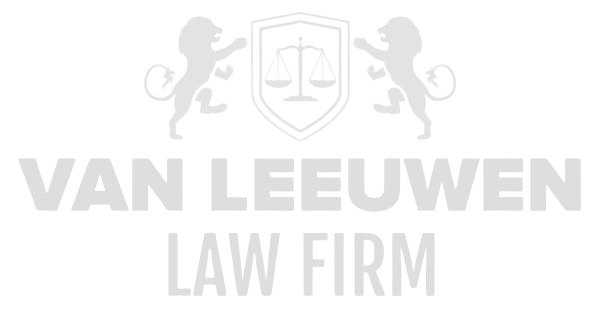New digital products and business models are the driving forces behind competitiveness and growth potential in a rapidly evolving technological landscape. These innovations not only require advanced software and data platforms but also a robust legal and ethical framework, where privacy and data security are embedded from the concept phase. Privacy by design demands that, at every step of product development—from user journey mapping and functional design to go-live and ongoing optimization—the protection of personal data is integrated. This means that architectural choices, third-party integrations, data storage, and analysis methodologies must be pre-assessed based on legal grounds, data minimization, and security measures, with all design teams guided by joint privacy and security guidelines.
At the same time, the application of artificial intelligence and machine learning in new digital products introduces additional complexity. AI governance frameworks are necessary to address both ethical and technical issues, including model transparency, decision explainability, and bias mitigation. In an international context, there is also the need to comply with varying laws and regulations—such as the GDPR, the upcoming AI regulation in the EU, and sector-specific standards in financial services or healthcare—placing these considerations high on the agenda. For organizations, their boards, and regulators, accusations of financial mismanagement, fraud, bribery, money laundering, or sanctions violations can not only halt operational projects but also severely damage trust in innovative products.
(a) Regulatory Challenges
UVP (Use Value Proposition) analyses and compliance checklists must align with both existing and upcoming legislation surrounding AI and data products, such as the AI Act and sectoral guidelines for medical devices. The interpretation of terms like ‘high-risk’ applications requires legal expertise to determine in which category a new product falls and which additional permits or notifications are needed prior to market introduction.
Data Protection Impact Assessments (DPIAs) and Fundamental Rights Impact Assessments (FRIAs) must be structured according to universally accepted methodologies, with explicit attention to automated decision-making, facial recognition, or predictive profiling. Legal teams should develop risk matrices that translate legal criteria into measurable risk scores, enabling product development teams to directly see which functionalities require additional mitigation measures.
Transparency obligations under the GDPR and potential obligations for open-source publication of AI models bring legal risks. Legal review is necessary to determine which parts of algorithms need to be disclosed to meet explainability requirements without jeopardizing intellectual property.
Cross-border AI services—such as hosted machine-learning APIs—fall under international data transfer regulations. Mechanisms such as model contract clauses or Binding Corporate Rules (BCRs) must be embedded in the delivery terms of SaaS licenses. Legal compliance specialists must continually update contract templates to align with new jurisdiction specifications and sanction changes.
Regulatory review points in agile development cycles present a challenge because traditional approval processes do not fit with rapid iterations. Compliance functions must be integrated into sprints, with short feedback loops and pre-defined acceptance criteria to ensure privacy or security risks do not go unnoticed before moving to production environments.
(b) Operational Challenges
Implementing privacy by design in daily development implies that CI/CD pipelines automatically run privacy tests with every code commit. Automated scans for hardcoded credentials, open data endpoints, or unauthorized third-party calls must precede every build, requiring tools and expertise at the intersection of DevOps and security.
For AI models, a ‘model lifecycle management’ process must be established, where every training, update, or deprecation of a model is logged, reviewed, and approved by a central governance team. Documentation automation and version control are crucial to ensure decision reproducibility and maintain audit trails.
Data protection impact assessments should operationally translate into concrete measures—such as standard pseudonymization of datasets, encryption protocols during transit and at rest, and dynamic access controls—rather than just theoretical reports. Security engineers and data stewards should periodically validate technical configurations and practice incident procedures.
Training and awareness at the functional level are essential. Product managers, UX designers, and data scientists must understand how privacy and security principles are translated into wireframes, data schemas, and API specifications. Operational teams should report on privacy trade-offs made and choices in sprint demos and retrospectives.
Continuity of interconnected AI and data platforms requires redundant architectures with built-in failover and recovery mechanisms. Operational guidelines for incident response should include AI-specific scenarios—such as model skew or drift—and establish automated rollback processes when new model releases introduce unexpected risks.
(c) Analytical Challenges
The responsible use of data analysis in new digital products requires the implementation of Privacy Enhancing Technologies (PETs) such as differential privacy and federated learning. Data engineers must develop pipelines that generate anonymized dataset versions without significant loss of statistical value, while data scientists should be able to experiment with these datasets while ensuring privacy guarantees are automatically maintained.
Fairness and bias detection in machine learning models requires periodic audits with structured fairness metrics and vulnerability scripts. Analytical teams must implement frameworks that automatically screen training data for underrepresentation of subgroups, followed by corrective steps—such as data augmentation or weight adjustments.
Integrating consent and preference management into analysis systems means that only datasets for which explicit consent has been obtained are made available. Analytical ETL jobs must respect consent flags and propagate real-time consent changes to feature stores and model serving platforms.
Performance metrics for AI models should include not only accuracy and latency but also privacy budgets and security scan scores. Dashboards for model monitoring should display both technical performance and compliance indicators, enabling analytical teams to intervene directly in case of deviations.
Audit reading and reproduction of analyses require end-to-end provenance tracking. Data lineage tools must automatically capture all transformations, model parameters, and dataset versions, enabling both internal auditors and external regulators to explicitly trace how a specific output result was generated.
(d) Strategic Challenges
Strategic roadmaps for digital products and AI initiatives must embed privacy by design and AI governance within portfolio management, framing investment decisions through risk analyses on legal, ethical, and reputational levels. Governance KPIs for compliance, incident frequency, and user trust should be part of quarterly reports and risk committees.
Partnerships with regtech providers and specialized compliance advisory firms support strategic agility in complex regulatory environments. By jointly developing proof-of-concepts for new governance tools, responses to changing standards can be made more quickly without increasing internal resource demands.
Reputation management and external communication about privacy and AI governance programs serve as a strategic instrument. Publishing transparency reports and whitepapers on ethical AI implementations can provide a competitive advantage and strengthen stakeholder trust, provided they are consistently supported by evidence and audit statements.
Innovation funding for R&D in privacy-enhancing AI and secure data architectures should be strategically budgeted. By creating a dedicated fund pool, proof-of-concepts for new PETs or protected AI frameworks can be quickly validated and scaled, without burdening regular operational budgets.
A culture of continuous governance maturity requires systematically translating lessons learned from incidents and external audit findings into revised policy documents, training modules, and tooling upgrades. Establishing a cross-functional “AI & Privacy Governance Council” fosters knowledge sharing, accelerates decision-making, and keeps the organization adaptive in a globally changing legal and technological landscape.









